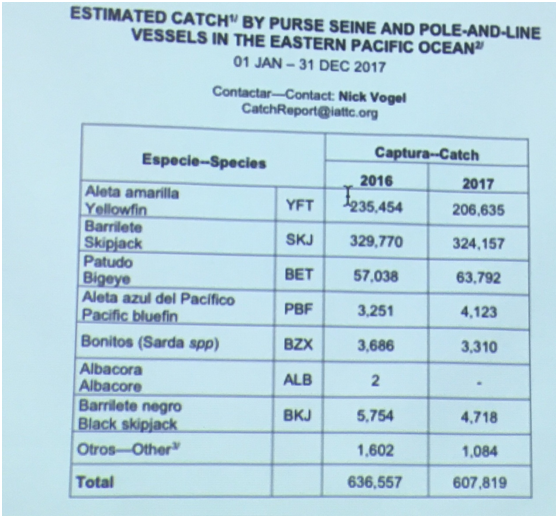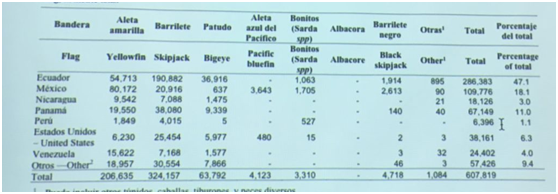Slow start to tuna fishery for Ecuador
[ 2018.02.27 ]
Tuna catches in the eastern Pacific this year are about half of the level seen at this point in 2017, multiple sources at Ecuadorean tuna fishing firms told that.
“2018 might be a difficult year [if catches remain so low],” said Olmedo Zambrano, general manager at Eurofish, an Ecuadorean group that owns 13 tuna vessels.
Catches have been scarcer in “the south”, or Peruvian waters, where some Ecuadorean firms own licenses to fish, said Pablo Garcia Barriga, fleet operations manager at Servigrup, a shipowner with seven vessels.
In December and January there has been good fishing, although not abundant, south-west of the Galapagos islands. But, since the end of the veda period in January, crossing streams has made fishing more difficult and catches in Peru are “infinitely lower than last year”, Garcia said (see video interview below in Spanish), adding he hopes catches would recover soon. Lower availability causes higher competition between vessels fishing in the region.
However, the Ecuadorean tuna fishing association’s executive director, Luigi Benincasa Azua, stressed it was too early to judge catches, since the veda closure had recently ended, and in recent years fishing volumes have been relatively stable.
The Ecuadorean tuna fleet, with 116 vessels, is the largest in the eastern Pacific Ocean. Last year, its share rose to 47.1% of total catches from 43.6% in 2016, according to Inter-American Tropical Tuna Commission (IATTC) figures.
In 2017, the estimated catch by purse seine and pole and line vessels in the eastern Pacific Ocean totaled 607,819t, down from 636,557t in 2016. The decrease was mainly driven by lower yellowfin catches, Benincasa noted.

Last year, the Ecuadorean fleet caught 286,383t, or 47.1% of the total. Mexico caught 108,776t, or 18% of the total, Panama 11% and US 6.3% of the total.

The port of Manta, which is the largest in Ecuador, saw landings reaching almost full capacity in several months last year, Benincasa said, noting that apart from the Ecuadorean tuna fleet, vessels from Panama or other neighboring countries were unloading there.
This is the reason why Manta is known in Ecuador as the “tuna capital” of the Eastern Pacific. At present, another smaller port is being built near Manta by a Spanish firm. It is expected to be ready in one to two years’ time, according to Benincasa.
He also noted that Ecuadorean authorities were carrying out strict controls on catches. Also, observers are in place to make sure all practices were respected, in line with IATTC rules, he said.
Benincasa also noted that the new fishery law, which is currently being put together by the government, would maintain current transparency but making the regulation “more agile”, speeding up some bureaucratic practices.



